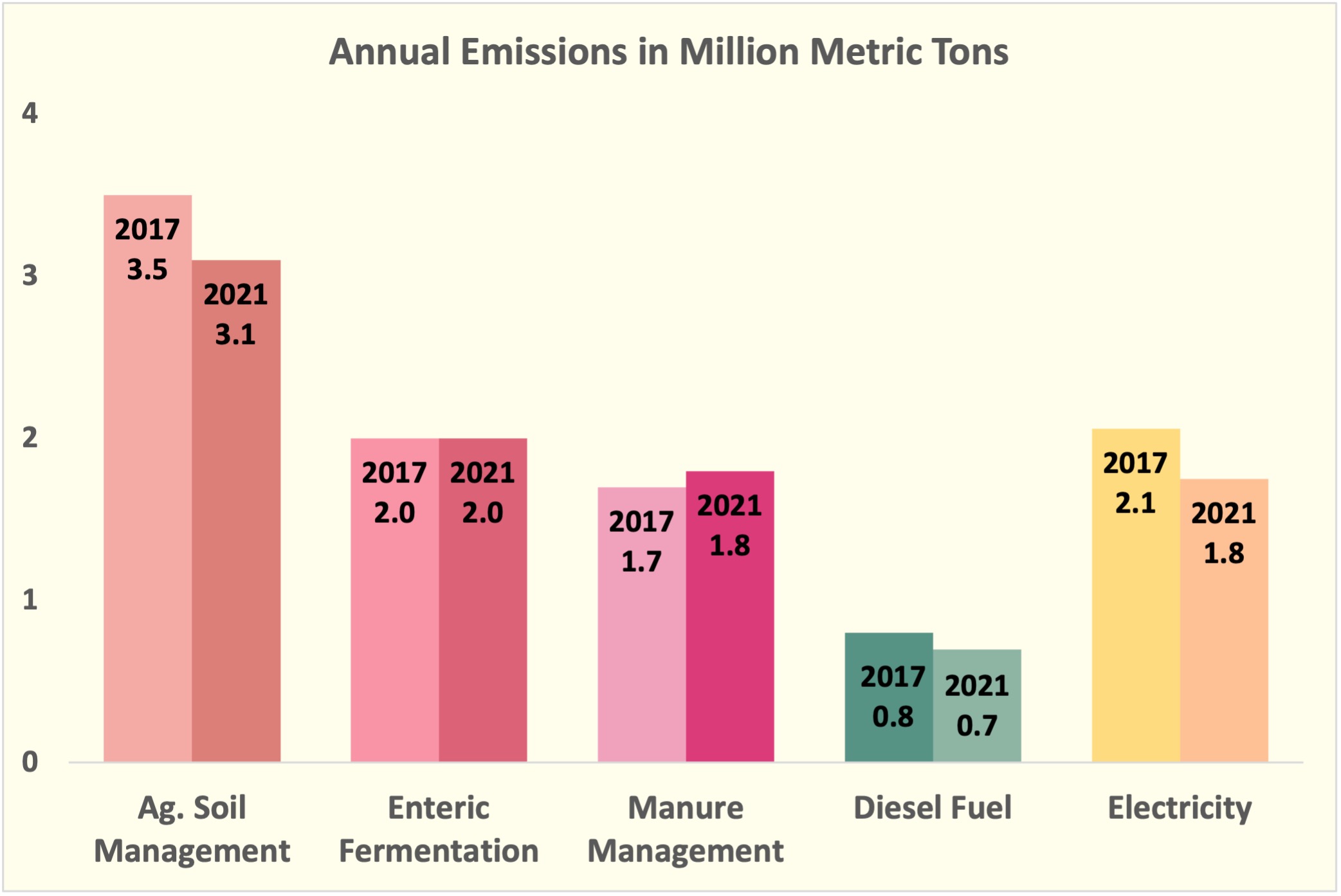December 20th, 2023 Food & Agriculture Seminar
You can view our PowerPoint outlining our food and agriculture solutions in the link attached here

Food and agriculture emissions are declining
Georgia's GHG emissions from food and agriculture decreased by 7.1% from 10.1 MMtCO2-e in 2017 to 9.4 MMtCO2-e in 2021. Agriculture soil management is the most significant contributor to the sector's emissions and is also the main driver of the sector's emission reduction. "Conservation agriculture" that includes no-till farming is a key Drawdown Georgia solution that has contributed to this, but could reduce emissions even further.
The decline in GHG emissions from electricity is the next largest reduction over the past five years, and it remains an opportunity for additional reductions as the state's "solar electricity" grows and its coal combustion shrinks. Emissions from diesel could be cut by "electric and efficient trucks" including farm equipment.
Manure management was the only sub-sector that experienced an increase an increase of emissions (5.9%). Plant-rich diets have the potential to curb this growth and also to reduce methane from enteric fermentation of cattle.
**********
See this PPT of a September 15, 2022 presentation on "Tracking Climate Solutions in Georgia's Agriculture, Food and Forest Sectors with Drs. Jeff Mullen and Jacqueline Mohan. The seminar focused, in particular, on composting and afforestation.
Composting
 Composting allows for organic matter to be broken down by microbes. The process sequesters carbon and produces fertilizer.
Composting allows for organic matter to be broken down by microbes. The process sequesters carbon and produces fertilizer.
Georgia currently operates about 38 composting facilities at various scales. Composting could reduce several landfills in Georgia and would potentially reduce methane emissions.
Carbon Drawdown Potential: 1 Megaton of reduction = Divert ~2 million tons of organic wastes including food waste from landfilling to composting by 2030
Conservation Agriculture
 Conservation Agriculture refers to agricultural practices that support biosequestration via crop rotation, managing soil organic matter including cover crops, and reduced tillage.
Conservation Agriculture refers to agricultural practices that support biosequestration via crop rotation, managing soil organic matter including cover crops, and reduced tillage.
Georgia has about 3.8 million acres of croplands. It’s estimated that conservation agriculture practices increase the carbon sequestration rate at an average of 0.2 tons of carbon per acre per year.
Carbon Drawdown Potential: 1 Megaton of reduction = Adapt additional 1.6 million acres of croplands into conservation agriculture practices in Georgia
Plant-Rich Diet
 On average, Georgians consume about 105 lbs. of meat (beef, pork, poultry & fish) each year. Plant-rich diets, such as vegetarian or vegan diets, would reduce emissions associated with meat production.
On average, Georgians consume about 105 lbs. of meat (beef, pork, poultry & fish) each year. Plant-rich diets, such as vegetarian or vegan diets, would reduce emissions associated with meat production.
A good number of companies in the United States are promoting plant-rich diets and grass-fed meats that produce less CO2 emissions. Plant-rich diets have significant potential to further reduce these emissions.
Carbon Drawdown Potential: 1 Megaton of reduction = 25% of Georgia population shifts to plant-rich or low-carbon diets
Reduced Food Waste
 According to the USDA, between 30-40% of the nation’s food supply is wasted each year.
According to the USDA, between 30-40% of the nation’s food supply is wasted each year.
It’s estimated that each year Georgians contribute about 2 million tons of food waste. An additional 1 Mt of CO2 could be reduced by preventing 12% of the state’s current food waste.
Carbon Drawdown Potential: 1 Megaton of reduction = Reduce about 12% of current food waste

